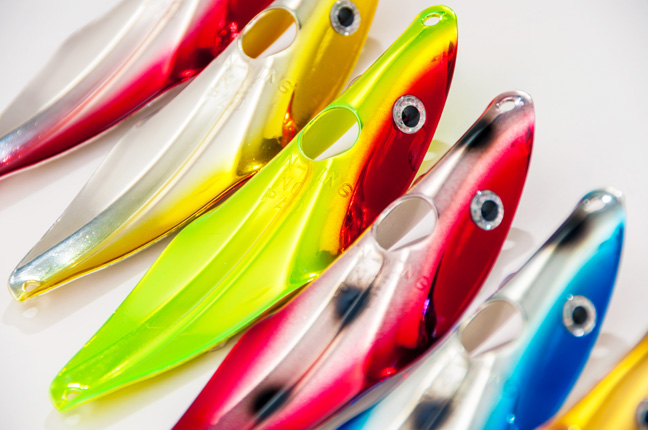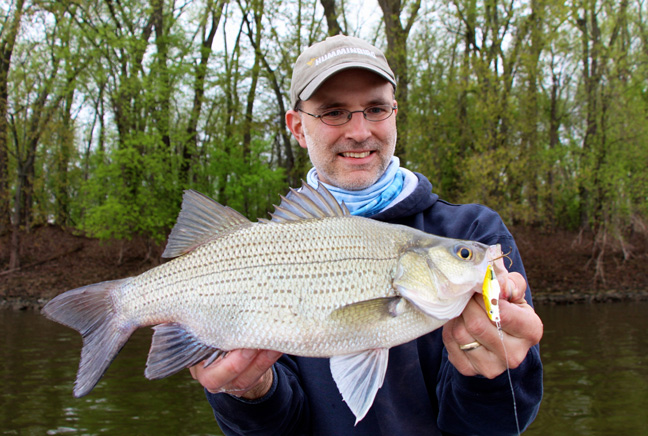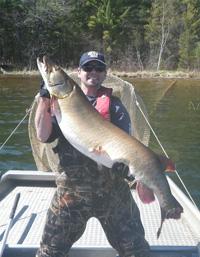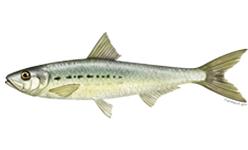Peach State Giant Catfish Waters
There is something special about catching a big fish, but big is relative. Crappie fishermen want a three pounder and bass fishermen dream of ten pounders. But catfishing is a whole different world, with fish over sixty pounds a reasonable goal.
We are blessed here in Georgia with many waters, from rivers and big reservoirs to small public lakes, where you can catch huge catfish. And there are three different species that have state records weighing over 44 pounds, and two of them break eighty pounds.
Channel cats are in all our rivers and lakes and big ones can be found many of them. Huge blue cats roam lakes and rivers and flatheads, introduced into the state years ago, grow to monster size where they were illegally introduced.
Try these waters and tactics to catch a catfish that will test your equipment and skills fighting them.
Lake Andrews
Lake Andrews is a small 1540 acre Corps of Engineers lake just downstream of Walter F. George. It backs up to the George dam and the tailrace there produces some big catfish. The state record blue cat, an amazing 80 pound, 4 ounce fish, was caught in Andrews in 2010. And a 67 pound, eight ounce blue was landed there in 2006.
There is a good population of cats of all species and sizes in Andrews and your chance of catching a big fish is excellent. According to the Georgia Department of Natural Resources, Wildlife Division, blue cat populations are expanding and there are good numbers in the 40 pound range. And flatheads are growing fast, with many fish over ten pounds, so huge fish are not many years away.
For the big blues use cut gizzard shad and whole threadfin shad. Bigger flatheads like live bream, suckers, crayfish or shad. Blues will take live bait, too, but try both cut and live bait by putting several rods out. When the current is strong from power generation at the George dam both species bite better.
Fishing at night this summer is a good bet but when current is strong big ones will bite during the day, too. A boat will greatly improve your chances. Drift your cut bait just below the George dam from the buoy line downstream. You can use a motor to slowly ease down the river with the current or anchor and drift your bait.
Use a depthfinder to find holes in the river bottom and anchor just above them and use a sinker heavy enough to get your bait to the bottom and hold it. Let it sit in one place so the current carries the scent down to fish in the hole.
Further down the river find eddies and holes and fish them the same way. Undercut banks are favorites of big flatheads so anchor above deep water right against the bank, especially on outside bends, and let your bait drift into the hole.
Use heavy tackle for the big fish you want to catch. Light saltwater spinning or baitcasting tackle will give you a better chance of landing a monster fish. Eighty pound braid and a big, strong hook are needed to pull the fish out of holes and fight them against the current.
Altamaha River
For river fishing the Altamaha has a well earned reputation of producing huge fish. The Wayne County Board of Tourism hosts a catfish tournament in Jesup each summer and some huge fish are caught each year.
The state record for flatheads is shared by two 83 pounders caught from the Altamaha, the first in 2006 and the second in 2010. Bigger fish have been reported taken on set hooks and trotlines that don’t qualify for the record, so you have a change of setting a new record there this summer.
The state record channel cat is a 44 pound, 12 ounce fish landed in the Altamaha River in 1972. Although the flatheads in the river have eclipsed the channel cat fishing, you still have a good chance of catching a huge channel cat there.
Live and cut bait work well for channel cats and flatheads prefer live bait. Use big bream or shad and remember bigger baits usually catch bigger fish. And eight-inch shad or bream is not too big for bragging size catfish.
Find deep holes on the outside bends of the river and anchor above them. Drift your bait down into the holes and use a sinker big enough to hold it in place in the current. You will need heavy tackle for these big fish.
Also try setting up camp on a sandbar on the river and putting rods out. The sandbars are usually on the inside bends of the river so use tackle that will allow you to cast to the edge of the hole on the outside of the sandbar. Set out several rods and relax while waiting on a bite.
Big flatheads are caught all along the Altamaha but the best area for big blues is from Jesup downstream.
Lake Thurmond
Usually called Clarks Hill, Thurmond is our biggest lake located on the Georgia/South Carolina border. It produces big flatheads and blues, and there are big channel cats in the lake, too. Flatheads have been in the lake for about 30 years but they have grown extremely fast.
In 2010 a 64 pound flathead was landed at Clarks Hill and a 62 pound blue was caught there in 1979. There is not a lot of fishing pressure on cats so the big ones have gotten bigger and bigger. The Little River running from the dam upstream to where it gets shallow near Highway 78 is a good part of the lake to fish.
Use cut bait for blues and live bait for flatheads and heavy tackle. You can get away with 30 pound test line in lakes since there is no current to fight, but heavier line improves your odds. And be sure to use a strong hook so it will not be straightened in the fight.
Above the Highway 43 bridge fish deep outside bends of the river. There is some standing timber along the old river channel in this area and fishing right on the channel lip near it is a good tactic. Also fish the ends of points that drop into the old channel.
Downstream of the Highway 43 bridge find humps beside the river channel. Humps that top out 20 to 30 feet deep and drop into 50 to 60 feet of water are good. Drop your baits down right on the drop but put some on top of the hump, too. Catfish will move on top of the humps to feed, especially at night.
Lake Oconee
Lake Oconee is a Georgia Power lake just south of I-20 in central Georgia. It has been a sleeper lake for big catfish but more and more people are fishing for them and new records for new records for flatheads and blues seem to be set often. It has produced a blue cat weighing over 47 pounds and a flathead over 44 pounds, but bigger fish are in the lake.
Live shad and bluegill are the best baits on Oconee. Since Oconee has turbines at the dam to produce power and also pump back water at night, current moves both ways in the lake and there is usually some current, making fishing much better.
Some big fish are caught right at the buoy line at the dam on points that drop into the old river channel. Humps in this area are good, too, as are points and humps up the Oconee River and in the lower section of Lick Creek.
Anchor so you can let your bait sit on the edge of the drop into the channel on points and humps. Where you anchor will depend on the direction of the current flow. The down current side of the point or hump, where the current flows over the more shallow water into the deeper water creating an eddy is the best place to have your baits.
Put out several rods with different baits on each, and have the bait on the bottom from where the drop first starts to fall on down it to deeper water. There is a lot of standing timber in the lake off these areas so you will need stout tackle to keep a big catfish out of the trees when you hook it.
High Falls Lake
High Falls is a small 660 acre Georgia Power Lake just off I-75 between Jackson and Forsyth. It produces some amazingly big flatheads for its size and held the state record for them for a time, with a 60 pounder the current lake record. It is an old lake with silted in structure and no power generation so current is not much of a factor.
High Falls is a state park and you can be on the water only during the day, from daylight to sunset. Boat motors are limited to 10 horsepower so you won’t be bothered by skiers or jet skis, and two ramps give you easy access to all of the lake.
Fish the lower end of the lake, from Buck Creek to the dam, targeting deeper holes along the old river channel. The outside bend of the old channel is best and it can be somewhat hard to find since most of the channel is silted in, but there will be a drop you can find with a depthfinder.
Slowly drift big live bluegill or shad along the drop, keeping your bait right on the bottom. There are some old stumps on the bottom but not a lot of cover, so lighter tackle will work. Use a sinker just heavy enough to keep your bait on the bottom and move along the drop with your trolling motor very slowly, giving the catfish a chance to bite.
Lake Nottely
Located right at the Georgia/North Carolina line near Blairsville, Nottely is a 4180 acre Tennessee Valley Authority lake that is very fertile and it has produced a 51 pound flathead. It is one of our best north Georgia lakes to land a bragging size flathead.
The best cat fishing in early summer is on the upper end of Nottely where it narrows down into the river. For flatheads fish points that drop into the river channel with big live bream and shad. Slowly drift the ends of the points with your bait right on the bottom.
As the water warms during the summer flatheads can be caught on the lower lake on deep points and humps. Anchor and fish your bait on the bottom where the hump or point drops into the old channel. Fishing at night will be best.
Coosa River
The Coosa River from Rome to the state line where Lake Weiss starts holds some big blue and flathead cats. It has produced a blue over 60 pounds and a flathead over 40 pounds and bigger fish are there.
Fish the mouths of smaller creeks and ditches that empty into the river with live bluegill and shad or cut bait. The eddy formed by the points on both sides of the mouth of the creek are good places for big cats to hold and feed. In most of the creeks you can anchor in the mouth of them and put baits out on both sides, from the top of the point down into the old creek channel.
Also try outside bends where the current has cut deeper holes and undercut the bank. Let your bait drift into the holes and under the bank. Use heavy tackle to pull the big fish from the cover in the undercut banks and wood that has washed into the deeper holes.
Oostanaula River
The Oostanaula River runs from Calhoun to Rome where it joins the Etowah River to form the Coosa. It is a fairly small river and you will need a smaller boat to fish it and will have to take care watching for shallows and wood in the water.
Some big cats are caught here and the river has produced blues and flatheads in the 40 pound range. There is a lot of cover in the river so you will need heavy tackle to land bigger cats. Live bluegill or shad are the best baits for the big fish.
As on other rivers, find undercut banks and holes on the outside bends of the river to fish. Use the current to take your baits to where the fish hold or let it sit on the bottom upstream of the holes to pull the fish to it.
All these waters have produced big catfish and will continue to be good this summer. Flatheads grow fast and you can expect new records to be landed as the earlier spawns of the introduced fish grow bigger and bigger. Blues have been around longer and there are some old, big fish in all these waters.
Let big cats go so you have a chance of catching them again when they are even bigger. Flatheads, unlike big blues and channel cats, are good to eat no matter what size but give them a chance to reach record weight.
Choose a place to fish near you or take a summer trip to one further away. Use the right baits in the right places and you may get your name in the record books for a new lake or river record, or for a new Georgia state record.







